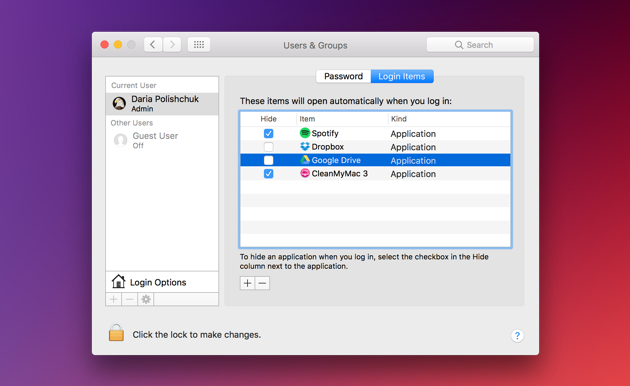

If your Mac is auto-launching too many apps, what’s supposed to be a time-saver could be slowing your computer down. This is designed to help you get started on your tasks as soon as you switch on the device. Macs are set to auto-launch certain apps when you log in. Right-click on each active app, then select Quit. Open apps have a small dot beside their icon. You can use your dock to do a quick check. To help your Mac pick up its pace, make sure you don’t have any useless apps running in the background. Running too many apps simultaneously can slow down your system. Limit the number of apps running in the backgroundĪlthough your Mac is a powerful machine, there are limits to how much it can handle at once.
#SPEED UP MAC SOFTWARE#
In case your device gets infected with malware (yes, even Macs get malware), you will have your files safely tucked away.Īlternatively, you may also want to try investing in a Mac cleaner software to help you sort through the clutter, hassle-free. You should also consider moving your files to an external hard drive. Click Review Files and go through each document before deleting them permanently. Use this tool to easily spot and delete large or useless files. Turning this tool on automatically empties the Trash of items that have been in there for more than 30 days. You can also use the tool to make sure your system is only storing recent email attachments. Click on the Optimize button to automatically delete movies and TV shows you’ve already watched. To do this, click Store in iCloud and follow the instructions on the screen. Free up space on your device by moving your files to cloud storage. You can then quickly manage your Mac’s storage using the following recommendations:

To free up space on your drive, click on the Manage button. To check your Mac’s available storage space, follow these steps:Ĥ.
#SPEED UP MAC FULL#
Your system becomes sluggish when it gets too close to full capacity. Your Mac needs adequate drive space to function efficiently. Just make sure you’ve saved all your work in progress before doing so. Restarting your Mac clears the memory and reloads processes. Have you tried turning it off and on again? Yes, this age-old advice is as effective as ever.
#SPEED UP MAC UPDATE#
If updates are available, click Update Now. Go to the Apple icon in the upper-left corner of your screen.Ĥ.
#SPEED UP MAC INSTALL#
To check and install updates on your Mac, follow these simple steps:ġ. System updates also equip your Mac with advanced features and better compatibility, helping ensure it runs optimally. To prevent cybercriminals from wreaking havoc on your computer, you must keep your operating system (OS) up-to-date. You can kill the resource-consuming process by double-clicking the specific item on the list. Whatever slows down your system will stay near or at the top. The processes will keep moving up and down on the list, so it’s best to watch the Activity Monitor for a few minutes. Once you’ve opened the Activity Monitor, click on the CPU tab, then select the % CPU drop-down to view the processes with the highest CPU usage. To open your Activity Monitor, open your spotlight (Command + Space) and type Activity Monitor.Īlternatively, you can open any Finder window and search Activity Monitor. To check what’s causing the excessive CPU load, head over to Activity Monitor. Some apps or processes may be taking up a hefty chunk of your Mac’s processor power, preventing other processes from running efficiently. Find and kill resource-consuming processes Here are the different methods you can try to fix a slow Mac. Thankfully, there are plenty of things you can do to improve your Mac’s performance and make your Mac feel new again.

For this reason, it can be quite bothersome when your Mac is slow. In fact, Macs are often known to have great security features, outlive their non-Mac counterparts, and remain lightning-fast even afters years of use. For many Mac users, paying a premium for an Apple devices is worth it for many reasons.


 0 kommentar(er)
0 kommentar(er)
